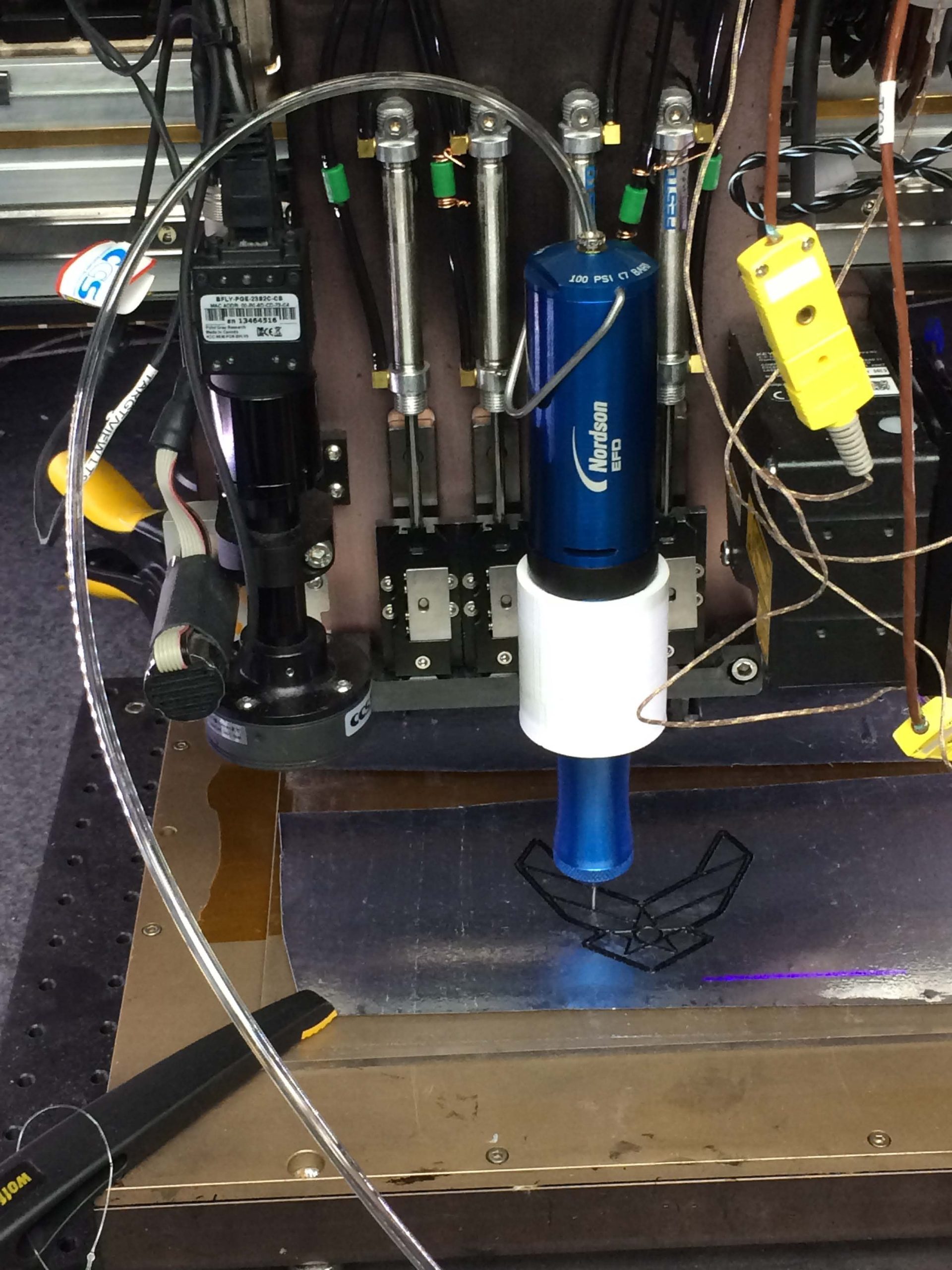WRIGHT-PATTERSON AIR FORCE BASE, Ohio – The Air Force Research Laboratory hosts a diverse group of professors and students from across the country each year.
In 2018 AFRL’s Composites Branch combined forces with the University of Arkansas, the University of Miami, Louisiana Tech University and the University of Texas at El Paso to demonstrate additively manufactured epoxy/carbon fiber composites used in many structural parts on air and space craft.
In comparison to the low-quality polymers used in many 3D printers, these printed materials are the same type already being used on Air Force systems, which have higher thermal and environmental durability and are extremely strong and lightweight.
Traditionally, epoxy/carbon fiber composites are made by layering sheets of carbon fiber coated with epoxy resin and then “cooked” in an expensive pressure cooker for many hours. Using sheets makes it difficult to create complex-shaped parts.
In comparison, additively manufactured, or printed composites, can produce parts with complex shapes and eliminates the need for the expensive pressure cooker and long heating cycles. The possibility to produce, assemble, or repair parts in the field or at the depot without a long logistics tail is a win-win scenario.
“The potential to quickly print high strength composite parts and fixtures for the warfighter could be a tremendous asset both in the field and for accelerating weapon system development,” said Dr. Jeffery Baur, leader of the Composite Performance Research Team.
International allies, including India, also see the promise. They have formed joint projects to use the composite printing process to make complex core structures which, when combined with top and bottom face sheets, create light weight sandwich structures with properties tailored to the physical forces that need to be carried.
Traditional sandwich structures are used on aircraft skins with the same core geometries over the entire area. Additively printing sandwich structures would enable structures that can withstand heavier forces where needed and to remain lighter weight where they are not.
The manufacturing agility of additively printed cores also allows for the easy insertion of other materials like metal fittings and electrical components which can ease assembly and create multifunctional structures with embedded sensing, actuation, computation, or electrical power for next generation multifunctional unmanned aerial vehicles.
The results of the team’s effort to develop additive printed composites will be published in a special issue of the Journal of Experimental Mechanics dedicated to the Mechanics of Additively Manufactured Materials.

